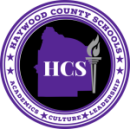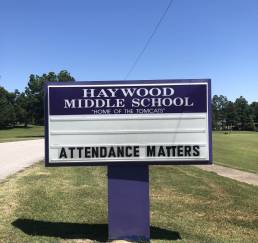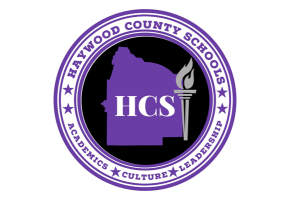Haywood Middle School – Reflections
In the world of education, July is the page turning month; the month that starts with a deep exhale and some relaxation then ends with the opening of schools once again for teachers and students. July is a time to look back on the successes of the previous school year, fine tune what worked well, and change what didn’t. It’s a time for everyone in the district to catch their collective breath before the wave of teaching and learning begins to build anew.
Over the course of a week in June, each principal in Haywood County Schools (HCS) sat down and reflected on the 2021-2022 school year. They discussed the challenges of the first year of full, in-person learning since 2018-2019. They reflected on their school’s academic successes and looked honestly at areas of needed improvement. Each principal, without exception, praised their faculty and staff and understood the challenges that come with being a classroom teacher. They also discussed tangible ways to positively impact learning during the 2022-2023 school year.
Every school leader and every school brings something unique to the district of HCS. From Anderson Early Childhood Center all the way to Haywood High School, the buildings and staff that make each school what it is are shaped by the administrative teams on each campus and the invaluable work that each classroom teacher performs every single day.
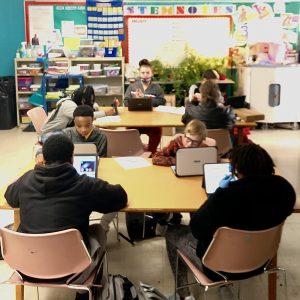 In a regular school year, making sure a middle school campus runs efficiently and effectively can be a challenge. Students are at an age when brain development is lagging behind hormonal changes and those hormonal changes are occurring at rates faster than they ever will occur again. Coupled with the stress that manifests itself during a typical school day, the middle school grade band can be the most challenging grade band in all of K-12 education.
In a regular school year, making sure a middle school campus runs efficiently and effectively can be a challenge. Students are at an age when brain development is lagging behind hormonal changes and those hormonal changes are occurring at rates faster than they ever will occur again. Coupled with the stress that manifests itself during a typical school day, the middle school grade band can be the most challenging grade band in all of K-12 education.
Haywood Middle School principal Michelle Tillman understands the challenges of navigating a middle school during a traditional year as well as during the two years of fractured learning during COVID-19.
In March of 2020, Haywood Middle School (like all schools), dismissed students for the year. When students returned in August of that year, they returned to an alternating schedule where they attended school every other day. This past school year was the first year students at Haywood Middle School attended school together, five days a week.
“This year was an adjustment – again. I only had one full year of being principal of HMS before COVID. It was like starting all over again,” Michelle said. “In 2020-2021, students would come on even and odd days. We had some kids who had to quarantine multiple times and that really limited learning opportunities that year.”
School leaders knew adjustments would have to be made as students and teachers acclimated to full, in-person learning once again. HMS leadership was as prepared as they could be.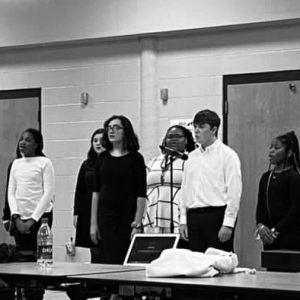
“We did a lot of pre-planning for this previous school year. We knew our class sizes wouldn’t be the same coming back full time. Everything we planned in the 20-21 school year, we also looked at through the lens of having everyone back at the same time for the 21-22 school year,” Michelle said. “We also kept our classes at 18 students or under. That helped teachers and students adjust to being back full time this past year.”
Even with the smaller class sizes, Michelle and her team did notice a difference in students once they were back full time.
“We noticed a drop in social skills during the two fractured years of COVID. We were re-teaching a lot of that this year,” she said. “We could tell a difference in students this year on a social and emotional level. Our students had to grow up faster than they normally would at this age. We’ve done a lot of work with our school counselor and our school social worker to get to the root of the problem and not just address the behavior.”
Regardless of the year, middle school students need social and emotional support in order to reach their academic potential. Another integral part of student support is the culture that is established in a given school. Students need to feel safe and need to feel heard. They want their feedback to matter, and they want adults to listen to them even when they know they’ve done something wrong.
 Michelle and her team have worked hard to establish a school culture at HMS that is inclusive and nurturing while also consistently reinforcing expectations.
Michelle and her team have worked hard to establish a school culture at HMS that is inclusive and nurturing while also consistently reinforcing expectations.
“We have a great culture at HMS. We have high expectations,” she said. “We have Leader in Me and RTI-Squared B in place that works really well for what we’re wanting our culture to be here at HMS. We’re here to learn; we’re here to have school. We want our students to be the best versions of themselves they can be.”
Along with a culture that supports students, HMS also wants students to begin exploring post-secondary options. The admin team at HMS makes that a priority.
“We really put an emphasis on post-secondary planning here. We’re proud of that,” Michelle said. “That’s something we started my first year, but – like a lot of things – was interrupted by COVID. We ask ‘What is your life going to be like when you leave Haywood County Schools?’ It’s never too early to have those conversations.”
Not only do students find what opportunities interest them, they also learn what aptitudes they have for those opportunities.
“I like that we push realistic goals – you can leave HCS and go TCAT or go into the workforce and have a lucrative career that will support your family,” Michelle said.
Paired with the emphasis on post-secondary opportunities, HMS is also moving toward a new conversation – one about data.
In education, letter grades no longer tell the whole story of what a student is learning. In Haywood County Schools, students are assessed three times a year to measure how they are learning and to make sure each student is getting the instruction they need in order to be successful. This upcoming school year, Michelle and her team want to start having data conversations with parents rather than traditional grade conversations. 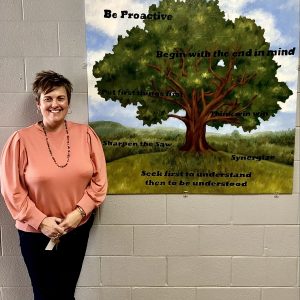
“We’ve done a lot of talking about data here. We’re changing our whole approach with our conversations with our parents. It’ll no longer be A, B, C, D, or F; we’re going to go over the data with parents. We want to change the whole conversation with parents and help them understand how we monitor student learning,” Michelle explained.
Parents will know how their student is progressing in each subject based on the student’s performance in class as well as their performance on benchmark assessments such as AimsWeb and IReady assessments.
Michelle knows that leading a school full of middle school students is an ever evolving job that takes reflection as well as thinking ahead to make sure all bases are covered while keeping students the main focus of all the work that is occurring.
“I think HMS is unique in the fact that it really feels like a family here. Our PLC’s are vital to the culture of our school. We vertically plan together and are open and honest about students and their needs. We want to have open conversations about meeting students where they are,” she said.
And, while this past school year was a step in the right direction for a return to normalcy, Michelle knows that running a middle school will continue to be a job that comes with challenges. She also knows she has the right team to help her overcome those challenges.
“I’m constantly looking back at what was successful in 2018-19 because that was my first year here as principal. I’ve done a lot of reflecting. I did my best to keep everyone connected over those two years of fractured learning. I thought about it all the time; I thought about what this past year would be like. I had constant conversations with my team; I need to bounce ideas off my Assistant Principals. Communication is key to any well run organization.”
